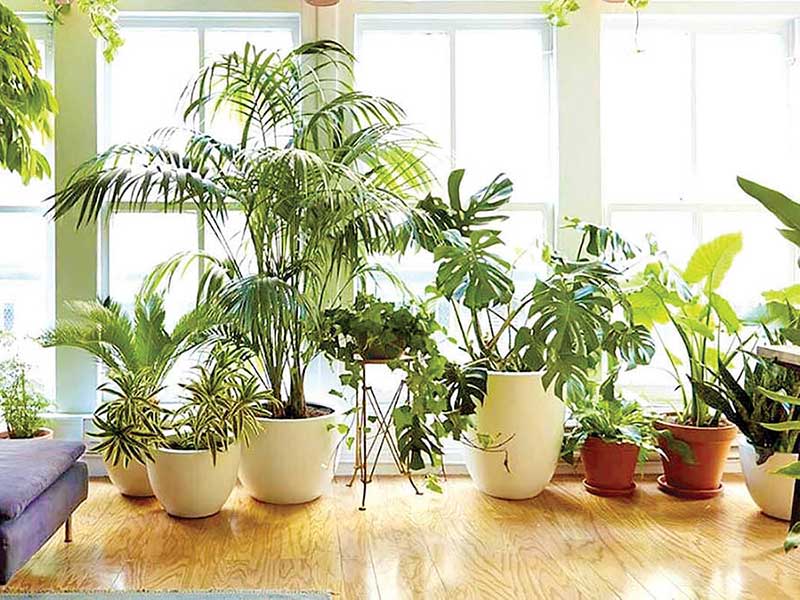Keeping plants at home or in a greenhouse: How to reduce moisture?
Greenhouse moisture control is vital to prevent the spread of disease. Wetting the plant during condensation at night increases the risk of hogs moving from infectious plant and patient to adjacent healthy plants.
You've heard and learned a lot of advice to keep humidity levels high at home, especially when you keep plants at home that require a lot of moisture, such as orchids. But what if the humidity was too high? High humidity inside the indoors, in addition to increasing the risk of damage to various parts of the house, can also cause problems for plants.
Does high humidity harm the plant?
Some plants are native to the tropics and warm and do not like anything as much as humidity, to the extent that in the pleasant air of these plants, humans can breathe hard, but usually apartment plants are not such plants. High humidity inside the closed space causes serious problems for most pot plants because it provides the basis for the growth and spread of fungal and bacterial diseases, as these microscopic organisms require a lot of moisture to spread in plants.
The same applies to greenhouse plants. Greenhouse moisture control is vital to prevent the spread of disease. Wetting the plant during dew formation due to high humidity at night increases the risk of hogs moving from infectious plant and patient to adjacent healthy plants. Active diseases can destroy greenhouse plants and destroy your months or years of effort.
How to reduce humidity in home or greenhouse space?
Reducing moisture at home is sometimes much easier than reducing moisture in the greenhouse because a volume of water is not constantly entering the environment. Flower and plant owners who have problems increasing the humidity of the house must first make sure that their ventilation system, cooling system and heating system are working properly. These devices can be used to maintain a good level of moisture.
Check the basement, the space behind the false ceiling and the pipes and other cold surfaces that may be the condensate agent to identify if they have increased the humidity inside and remove this source of air moisture. If you see surfaces that are sweating, you can insulate them to stop the formation of moisture in the air.
Greenhouse owners also have other options for controlling moisture and should immediately increase airflow in greenhouse space. Watering less frequently and improving the greenhouse drainage and sewage system removes additional moisture sources that may enter the space. Adding legumes to plants can create small streams that help prevent condensate at the plant level and dramatically reduce the risk of disease.

